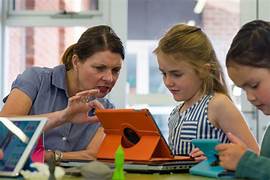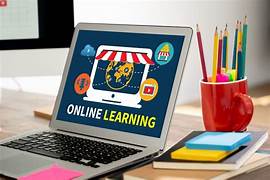How 3D Printing is Enhancing STEM Learning
In recent years, 3D printing has revolutionised many industries, and education is no exception. With the ability to create physical models from digital designs, this technology is changing the way students learn, especially in the fields of Science, Technology, Engineering, and Mathematics (STEM). By bringing abstract concepts to life, 3D printing offers a hands-on, engaging approach that helps students better understand complex ideas.
Whether it’s creating a model of the solar system, building architectural designs, or simulating biological processes, 3D printing is making STEM education more interactive and accessible. In this article, we’ll explore how 3D printing is enhancing STEM learning, the benefits it brings to students and educators, and how it prepares learners for future challenges in the rapidly evolving tech landscape.
1. 3D Printing Brings Abstract Concepts to Life
One of the most significant advantages of 3D printing in STEM education is its ability to make abstract concepts tangible. For example, rather than just reading about molecules in a biology textbook, students can use 3D printers to create models of DNA structures or protein molecules. This hands-on approach allows students to visualise and interact with complex structures, fostering a deeper understanding.
How It Helps
- Makes abstract ideas like geometric shapes, molecules, and ecosystems more tangible.
- Helps students visualise and understand theoretical concepts more effectively.
- Engages students in active learning through practical experience.
By creating models that students can physically touch, 3D printing promotes a more concrete understanding of abstract STEM topics, turning theory into practice.
2. Encouraging Creativity and Innovation
3D printing encourages students to think creatively and innovatively. Instead of simply following instructions, they can design and build their own models, prototypes, and experiments. This open-ended learning experience fosters problem-solving and critical thinking, key skills in STEM fields.
How It Helps
- Allows students to bring their creative ideas to life through design and printing.
- Develops critical thinking and problem-solving skills as students iterate on their designs.
- Encourages experimentation with different materials, structures, and solutions.
Whether students are designing simple mechanical parts or complex engineering solutions, 3D printing empowers them to experiment, fail, and try again—important lessons in the world of innovation.
3. Enhancing Engagement and Interactivity
3D printing transforms the classroom into an interactive learning environment. Traditional methods of teaching often involve reading and listening, but 3D printing takes learning a step further by allowing students to engage with the material in a more tactile way. For example, in a physics class, students can print models of simple machines or forces, making abstract theories easier to comprehend.
How It Helps
- Provides a hands-on approach to learning, increasing student engagement.
- Allows for real-time feedback and adjustments during projects.
- Encourages collaborative learning as students work together on projects.
When students can physically manipulate objects and see the results of their designs, they become more active participants in their learning. This type of engagement is especially beneficial in STEM, where students often struggle with abstract concepts.
4. Fostering Collaboration and Teamwork
In the world of STEM, collaboration is essential. 3D printing promotes teamwork by allowing students to work together on projects, share ideas, and solve problems as a group. Whether it’s building a model of a bridge in an engineering class or designing a new product prototype, teamwork is a fundamental aspect of the process.
How It Helps
- Promotes teamwork and collaboration as students work together on projects.
- Encourages the sharing of ideas and brainstorming sessions.
- Teaches valuable interpersonal and communication skills.
By working as a team to design, print, and test models, students develop essential skills that will benefit them in their future careers, whether in engineering, technology, or scientific research.
5. Preparing Students for Future Careers in STEM
As technology continues to evolve, the demand for skills in 3D printing is growing in various STEM fields. By introducing students to 3D printing early in their education, schools are giving them an invaluable tool that will help them in future careers. From designing medical devices in healthcare to creating prototypes in product development, 3D printing is shaping the future of innovation.
How It Helps
- Provides students with skills that are in high demand in STEM industries.
- Gives students practical experience with cutting-edge technology.
- Prepares students for real-world applications in fields like engineering, medicine, and manufacturing.
Learning 3D printing not only helps students understand STEM concepts better but also equips them with practical, marketable skills that are highly sought after in today’s job market.
6. Facilitating Remote Learning and Access
With the rise of online education, 3D printing offers a unique opportunity to facilitate remote learning in STEM subjects. Students can create their own models and experiments from home, and teachers can offer virtual lessons that include 3D models and simulations. This accessibility makes STEM education more inclusive, allowing students to engage with learning materials regardless of location.
How It Helps
- Provides students with the ability to print models and complete projects from home.
- Allows teachers to share digital designs for students to print on their own.
- Encourages online collaboration and learning through shared 3D models.
By integrating 3D printing with digital learning platforms, STEM education can become more flexible and accessible, ensuring that students have the tools they need to succeed, no matter their circumstances.
7. Promoting Sustainability in Education
Another benefit of 3D printing in STEM education is its potential to promote sustainability. Students can use recycled materials for printing, helping them understand the importance of sustainability and eco-friendly practices. Moreover, 3D printing allows for the creation of objects on demand, reducing waste and encouraging efficient use of resources.
How It Helps
- Encourages the use of sustainable materials for 3D printing projects.
- Reduces waste by enabling on-demand creation of models and prototypes.
- Raises awareness about environmental sustainability and the impact of technology.
By teaching students how to use 3D printing responsibly, educators can foster a sense of environmental stewardship while also advancing STEM education.
8. Improving Learning for Different Types of Learners
3D printing is beneficial for a wide range of learners, including visual, kinesthetic, and auditory learners. For visual learners, seeing and handling 3D models can make abstract concepts clearer. Kinesthetic learners benefit from the hands-on experience of designing and printing objects. In contrast, auditory learners can pair 3D printing activities with podcasts or recorded lessons for a more holistic learning experience.
How It Helps
- Tailors learning experiences to different types of learners.
- Provides multi-sensory learning opportunities, improving comprehension.
- Encourages active participation through hands-on creation and manipulation.
3D printing can serve as an effective educational tool for a diverse group of students, ensuring that each learner has the opportunity to engage with STEM subjects in a way that suits their individual learning style.
9. Enhancing the STEM Curriculum with 3D Printing Projects
Incorporating 3D printing into the STEM curriculum offers endless possibilities for exciting and interactive projects. From designing solar-powered cars in a physics class to creating historical landmarks in a history lesson, 3D printing can be integrated into virtually any subject. These projects provide real-world applications for STEM concepts and help students understand how the lessons they learn in the classroom can be used in everyday life.
How It Helps
- Introduces new, engaging projects to the STEM curriculum.
- Connects classroom learning to real-world applications and careers.
- Offers students the chance to work on hands-on projects that have practical outcomes.
By integrating 3D printing into the curriculum, educators can make STEM subjects more relevant, interesting, and applicable to students’ lives.
10. The Future of 3D Printing in STEM Education
Looking ahead, 3D printing is set to play an even greater role in STEM education. As the technology evolves, it will become more accessible and affordable for schools, allowing even more students to experience its benefits. The future of 3D printing in STEM education is exciting, with endless possibilities for new learning experiences, collaborations, and innovations.
How It Helps
- Continual advancements in 3D printing will bring new opportunities for students and educators.
- With growing affordability, more schools will be able to integrate 3D printing into their STEM programs.
- New applications of 3D printing will further enhance STEM education in the years to come.
The future of 3D printing in education looks bright, and as technology continues to develop, it will provide even more opportunities for students to engage with and excel in STEM subjects.
Conclusion
3D printing is more than just a passing trend—it’s a transformative tool that is changing the way STEM subjects are taught and learned. From enhancing creativity to providing hands-on learning experiences, 3D printing is helping students better understand complex concepts and prepare for the future. As technology advances and becomes more accessible, the role of 3D printing in STEM education will only continue to grow, offering exciting opportunities for students and educators alike.
FAQs
What is the role of 3D printing in STEM education?
3D printing enhances STEM education by bringing abstract concepts to life, encouraging creativity, improving engagement, and preparing students for future careers in technology and innovation.
How can 3D printing be used in the classroom?
Teachers can use 3D printing to create models, prototypes, and experiments for students to interact with, helping them understand complex ideas in subjects like biology, engineering, and physics.
What are the benefits of 3D printing for students?
3D printing allows students to visualise and interact with abstract concepts, encourages hands-on learning, fosters creativity, and prepares them for future careers in STEM fields.
Can 3D printing be used for group projects?
Yes, 3D printing promotes collaboration and teamwork by allowing students to design and create projects together, sharing ideas and problem-solving along the way.
What types of materials can be used for 3D printing?
A variety of materials can be used, including plastic, metal, and even recycled materials, allowing students to experiment and learn about sustainability.
How does 3D printing prepare students for future careers?
By learning how to design and print models, students gain practical skills in a technology that is in high demand across various industries, from manufacturing to healthcare.
Is 3D printing suitable for all types of learners?
Yes, 3D printing caters to different learning styles, including visual, kinesthetic, and auditory learners, by providing interactive and hands-on experiences.






